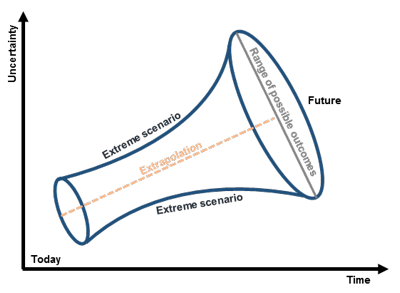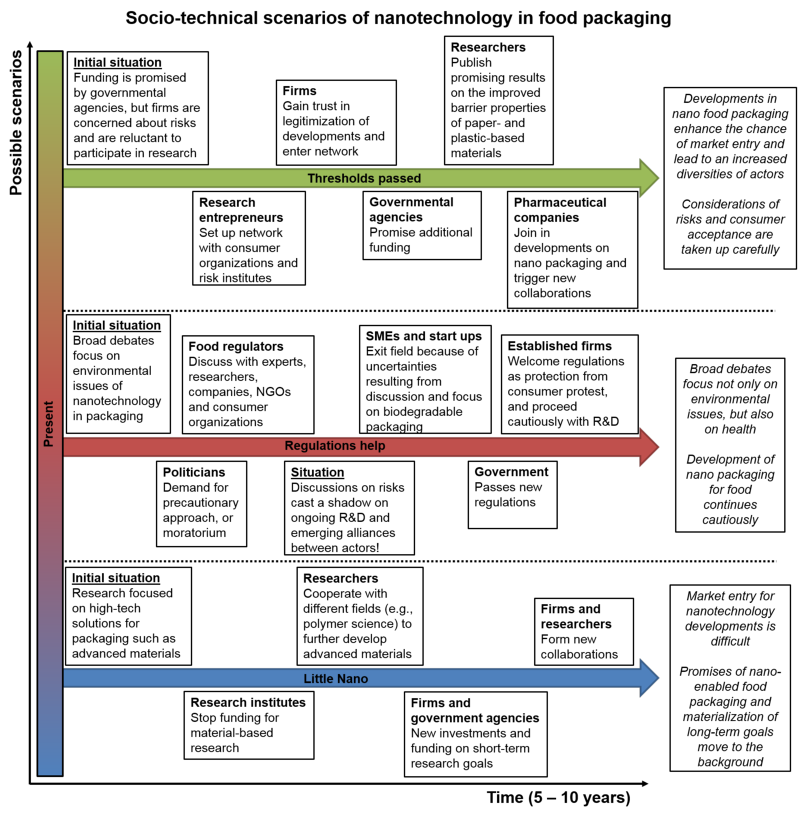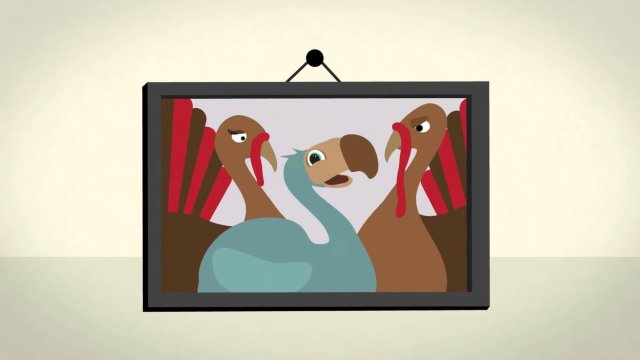Aim
Scenarios are important strategic tools to anticipate future societal, economic, or technological developments and their potential impacts. Scenarios are applied in diverse settings and for different purposes - within firms, to support policy, but also across different actors to facilitate joint strategies. Scenarios can also explore the way a particular technology may be used in the future, and thus inform the research and design process. A large variety of types of scenarios have been developed and they differ for example in terms of starting point which can be either in the present (forecasting) or in the future (backcasting), in terms of time scale which distinguishes between long term (>25 years) and short term (3-10 years) scenarios but also in terms of content, complexity and the nature of the data (qualitative vs. quantitative) (van Notten, 2003). Scenarios do not aim at actually predicting the development of new technologies, but scenarios can help to get a better understanding of the scope of possible developments, which developments are important, how a technology may be used, which impacts it may have, and what may influence the fate of a technology.
 Mostly, scenarios start with the present situation or the developments which led to it, which is then extrapolated towards an envisaged future. Therefore, current events, research, industry and policy strategies, and public debates are taken into account. Obviously, the further we look into the future, the larger the range of possible outcomes and the larger the uncertainty. Still, signals of what is to come are visible in the present and can be translated into drivers, uncertainties and pre-determined elements of the future which are important building blocks of the scenarios. Scenarios often sketch various options of how possible futures could look like while the reality is likely to lie somewhere between these worlds.
Mostly, scenarios start with the present situation or the developments which led to it, which is then extrapolated towards an envisaged future. Therefore, current events, research, industry and policy strategies, and public debates are taken into account. Obviously, the further we look into the future, the larger the range of possible outcomes and the larger the uncertainty. Still, signals of what is to come are visible in the present and can be translated into drivers, uncertainties and pre-determined elements of the future which are important building blocks of the scenarios. Scenarios often sketch various options of how possible futures could look like while the reality is likely to lie somewhere between these worlds.
Socio-technical scenarios sketch out technological and societal developments, for example how the action of industrial actors, regulatory agencies or the public acceptance can influence research and innovation processes and which alternative directions innovations, their application and broader societal implications may take (Parandian, 2012; Robinson 2009, Fraedrich et al., 2015). Techno-ethical or techno-moral scenarios focus particularly on normative issues and explore 'soft' impacts of technologies, such as the way norms and values, roles and responsibilities of actors, their relations and identities may change, or even our conception, e.g., our understanding, of a disease (Boenink et al., 2011; Krabbenborg, 2013). In both, socio-technical and techno-moral scenario theory, the co-evolution of society or morality and technology plays an important role: both can influence each other.
Practical considerations and implementation
Characteristics | Practical information |
|---|---|
Suggested time Long (weeks/month, including preparation) – you can reduce the time by reflecting on an existing scenario Level of difficulty Advanced Materials needed Pen/paper People involved Researcher, relevant actors for interviews |
|
Examples
Socio-technical scenarios of nanotechnology in the food packaging sector
One example of a set of socio-technical scenarios has been described by Rip and te Kulve where they propose multiples futures for nanotechnology in the food packaging domain (Rip & te Kulve, 2008). The elaborate and complex scenarios are visualized in the figure below in a compact and simplified form. Socio-technical scenarios of organic and large area electronics are presented in an article by Parandian and Rip where they also describe the scenario building process in detail (Parandian, 2012).

Reinventing the Dodo – a techno-moral scenario
One example of a techno-moral scenario or vignette has been written by Tsjalling Swierstra (Maastricht University) and Marianne Boenink (University of Twente) and animated by Steven van Eekelen (Animono). The scenario describes the resurrection of extinct species by synthetic biology. In this example, possible consequences of the resurrection of the Dodo are suggested, which are not directly obvious. This techno-moral vignette aims at stimulating discussion about synthetic biology.
The movie of the complete vignette can be found at: https://www.youtube.com/watch?v=lw-2886-Ft8. More techno-moral scenarios from the field of synthetic biology are available at: https://www.rathenau.nl/nl/page/synbio-scenarios.
Literature
- van Notten, P.W.F., et al., 2003, An updated scenario typology. Futures, 35(5): p. 423-443.
- Parandian, A., 2012, Constructive TA of Newly Emerging Technologies - Stimulating learning by anticipation through bridging events. University of Twente: Enschede.
- Robinson, D.K.R., 2009, Co-evolutionary scenarios: An application to prospecting futures of the responsible development of nanotechnology. Technological Forecasting and Social Change, 76(9): p. 1222-1239.
- Fraedrich, E., Beiker, S. and Lenz, B.. 2015. Transition pathways to fully automated driving and its implications for the sociotechnical system of automobility. European Journal of Futures Research 3 (1):11.
- Boenink, M., Cuijpers, Y., van der Laan, A. L., van Lente, H. and Moors E., 2011, Assessing the Sociocultural Impacts of Emerging Molecular Technologies for the Early Diagnosis of Alzheimer’s Disease. International Journal of Alzheimer’s Disease, p. 1-9.
- Krabbenborg, L., 2013, Dramatic Rehearsal on the Societal Embedding of the Lithium Chip. Ethics on the Laboratory Floor. S. van der Burg and T. Swierstra. London, Palgrave Macmillan UK, p. 168-187.
- Rip, A. and H. Kulve, 2008, Constructive Technology Assessment and Socio-Technical Scenarios, in Presenting Futures, E. Fisher, C. Selin, and J. Wetmore, Editors. Springer Netherlands. p. 49-70.
Further reading:
- World Energy Council, 2013, World Energy Scenarios - Composing energy futures to 2050.
- Swierstra, T. and A. Rip, 2007, Nano-ethics as NEST-ethics: Patterns of Moral Argumentation About New and Emerging Science and Technology. NanoEthics, 1(1): p. 3-20.
- Boenink, M., T. Swierstra, and D. Stemerding, 2010, Anticipating the Interaction between Technology and Morality: A Scenario Study of Experimenting with Humans in Bionanotechnology, in Studies in Ethics, Law, and Technology.
- Krabbbenborg, L. and van der Windt, H.J., 2011, Veranderende rollen, verantwoordelijkheden en waarden rondom point-of-care diagnostiek, Ned Tijdschr Klin Chem Labgeneesk, 36, p. 41-44.

